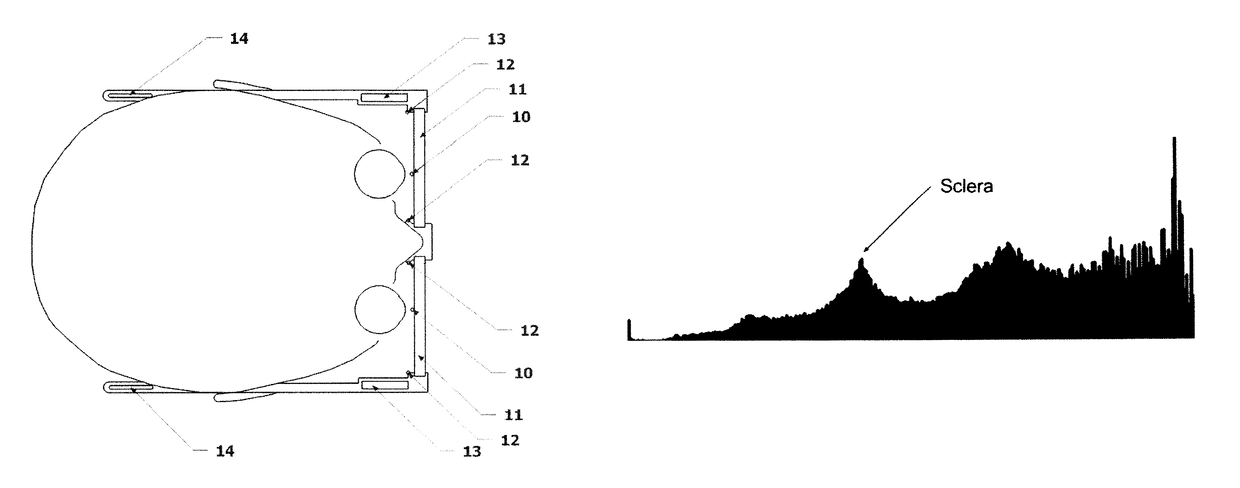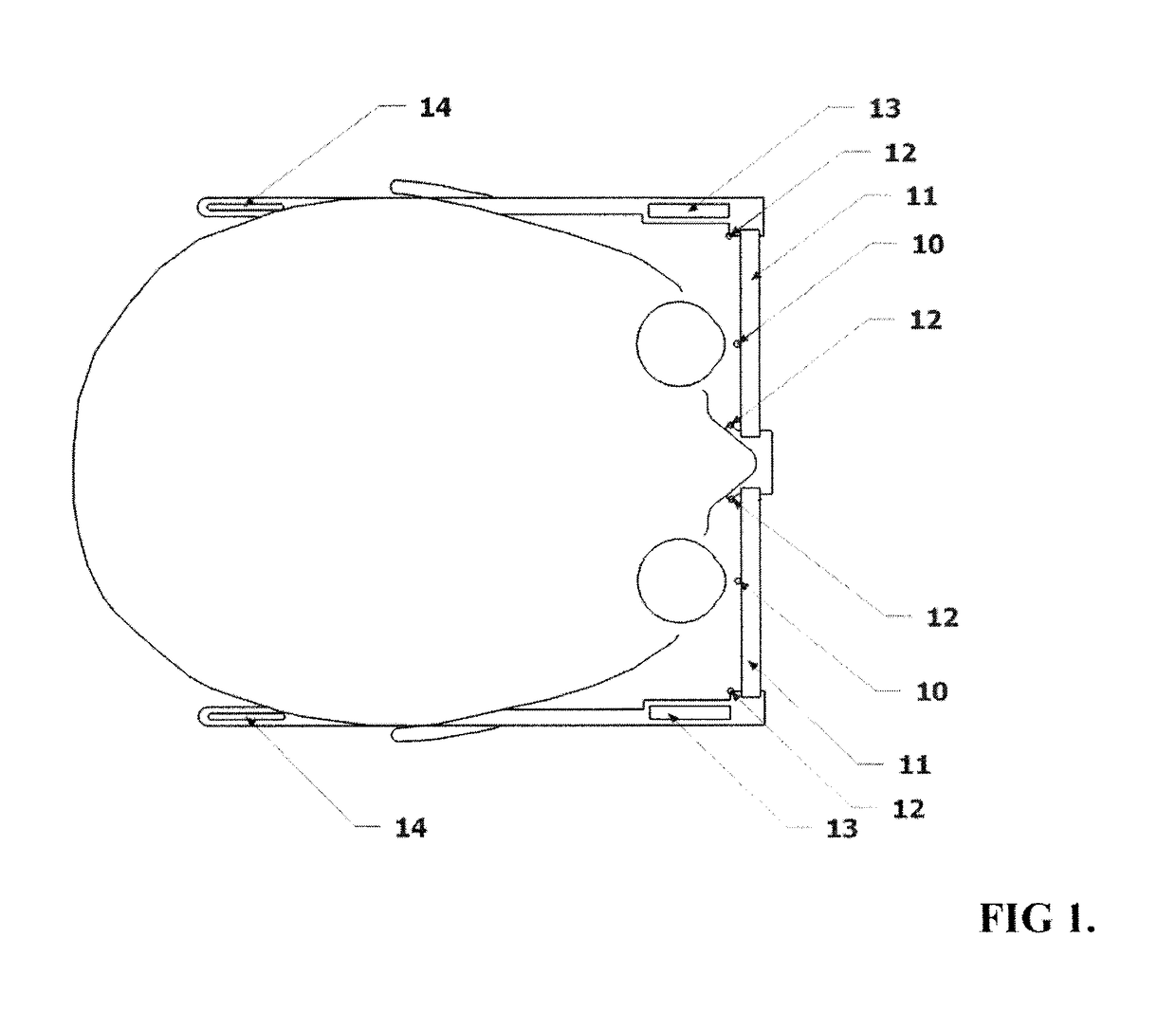Continuous autofocusing eyewear
a technology of eyewear and autofocus, applied in the field of eyewear with continuous autofocus, can solve the problems of reducing the ability of adults to accommodate near objects, cumbersome solutions, and loss of elasticity, and achieve the effect of not affecting the operation of the ey
- Summary
- Abstract
- Description
- Claims
- Application Information
AI Technical Summary
Benefits of technology
Problems solved by technology
Method used
Image
Examples
Embodiment Construction
[0023]The primary components of an embodiment of autofocusing eyewear are shown schematically in FIG. 1. In this diagram, there are two CMOS sensors forming the imaging subsystem 10, two variable-power lenses forming the lenses subsystem 11, four wide-angle IR LED lights forming the illumination subsystem 12, controller electronics forming the controller subsystem 13 and the battery subsystem 14 which powers all the other subsystems. These subsystems 10, 11, 12, 13 and 14 are all mounted on an eyeglass frame.
[0024]The imaging subsystem 10 is connected to the controller subsystem 13 and provides the image of the eye to be used for determining the depth of gaze. The lens subsystem 11 is connected to and controlled by the controller subsystem 13 and its role is to change the focus of the lens subsystem 11 in accordance with user's depth of gaze. The illumination subsystem 12 is connected to and controlled by the controller subsystem 13 and ensures that a clear picture of the eye is ava...
PUM
 Login to View More
Login to View More Abstract
Description
Claims
Application Information
 Login to View More
Login to View More - R&D
- Intellectual Property
- Life Sciences
- Materials
- Tech Scout
- Unparalleled Data Quality
- Higher Quality Content
- 60% Fewer Hallucinations
Browse by: Latest US Patents, China's latest patents, Technical Efficacy Thesaurus, Application Domain, Technology Topic, Popular Technical Reports.
© 2025 PatSnap. All rights reserved.Legal|Privacy policy|Modern Slavery Act Transparency Statement|Sitemap|About US| Contact US: help@patsnap.com



